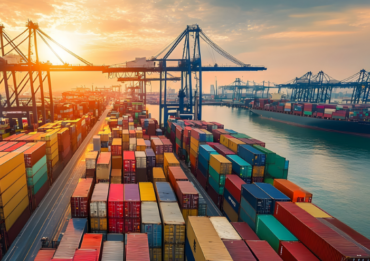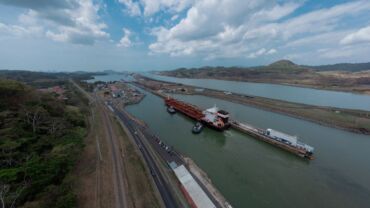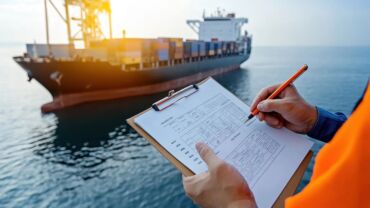Supply chain sourcing and management strategies are taking center stage as corporate stakeholders — including customers, employees, investors, and government regulators — push companies with global supply chains to make progress on their global Environmental, Social and Governance (ESG) commitments.
Reuters Events and Thomson Reuters ONESOURCE explored the pivotal role of procurement and supply chain professionals during the recent virtual event, “Powering Your ESG Strategy through Sourcing and Procurement.”
The panelists were:
- Lauren Richardson, Chief Procurement Officer, Colgate Palmolive
- Christine Montenegro McGrath, Vice President & Chief of Global Impact, Sustainability and Well-Being at Mondelez International
- Giulia Corinaldi, Director of Inclusive Economies Programs, Thomson Reuters Foundation
- Karen Lobdell, Senior Product Manager, Thomson Reuters ONESOURCE
The session showcased how companies’ sourcing, procurement, and supply chain strategies can advance their ESG objectives — including ethical labor practices, diversity and inclusion, and environmental protection — through their influence over supplier operations.
“There are a number of ways sourcing is absolutely critical to achieving our ESG objectives,” McGrath said. “It’s hard for any one company or one supplier individually to solve these issues, so we need to be working in partnership with our suppliers and bringing them on the journey.”
Richardson said that establishing procurement policies that drive environmental and social change is a top priority for Colgate Palmolive. “Our ability to reframe our approach to responsible sourcing — whether it’s a new material, a new region, a new part of the world, a new service specification, or meeting a new regulatory agenda — is at the top of our list,” she said.
Corinaldi added that exploitative working conditions, including human trafficking, are a critical issue impacted by companies’ procurement policies, processes, and protocols. Government regulators and non-governmental organizations are increasingly focused on workers’ rights and protection within the global supply chain, she said. As a result, “companies will invest in more resilient (suppliers) . . . Procurement and sourcing professionals are at the center of (these) increased expectations on companies. They’re really core to the future.”
The new approach to partnering with suppliers
McGrath said the corporate procurement process is undergoing a transformation. “It’s moving from (a focus on) pricing and transactional relationships to much more of a holistic business strategy,” she said. “We’re looking at our suppliers as strategic partners, not as somebody that we just buy from and have a single-lane relationship with.”
This requires transparency and shared values between a company and its vendors. “Part of that is our suppliers understanding their risk profiles . . . and partnering with them to help develop their capabilities (related to) climate change, human rights, due diligence,” McGrath added.
As an example, she cited Mondelez International’s commitment to diversity and inclusion in the workplace — and its ability to amplify its effort through the suppliers it chooses to work with. “We made a commitment to invest and spend a billion dollars with minority- and women-owned businesses by 2024,” McGrath noted. “And part of that is . . . helping to bring a more diverse group of suppliers into our supply chain and helping them learn how to scale up and grow as good business partners.”
How ESG plays a significant role in stakeholder expectations
Molondez International’s method for sourcing and partnering with suppliers will ultimately help retain customers and employees, and protect brand reputation, McGrath said. “Our employees want to understand what’s going on and feel confident that the company aligns with their values. Consumers want to (do business with companies that) align with their values.”
Lobdell agreed that modern consumers are putting their money where their values are based on companies’ business practices and ethics. “Look at Millennials and Gen X, Y, Z,” she said. “They’re very focused on ESG-related issues. That’s how they determine what product they’re going to buy, what service they’re going to engage in.”
“They’re looking at the company and saying, ‘What are their practices? What are their values? What does their mission statement say?’ They’re taking their money and they’re spending it . . . with ethical companies,” Lobdell said. She cited an Aflac survey that found that a vast majority of Millennials and younger generations wanted to buy from ethical companies, believed they performed better, and would pay a premium price for “ethical products” and for shares in companies that produce them.
McGrath agreed investors are a critical stakeholder group pushing companies to pursue ESG objectives. “All of our mainstream investors have interest in this,” she said. “They have their own tracking systems. They’re evaluating. They want to know what we’re doing, and they have a lot of in-depth questions. This theme of transparency is definitely critical” across stakeholder groups, she said. “It’s accelerating from a number of different vantage points.”
Identifying ESG risks with supply chain technology and processes
So, what tools do procurement and supply chain teams need to advance their ESG agendas and mitigate supply chain risk? “When it comes to automation and technology, that there really is no silver bullet,” Lobdell said. “There’s not a particular technology or solution that’s going to answer all questions when it comes to risk management from the ESG perspective. However, there are tools that can (help pinpoint) risk within your supply chain, within procurement, within your supplier base.”
This includes automated supply chain compliance software that uses customized questionnaires to query internal and external business partners to unearth risk exposure related to forced labor, product safety, and environmental issues, she said.
Richardson noted that some companies conduct “traceability exercises” to track the sources of supplies and components and their impact on land use, labor practices, and other ESG issues. Satellite technology can monitor deforestation and other factors to assess land use impacts and hold suppliers accountable.
“For us, it’s about enabling the success of diverse suppliers, but in so doing we track who we do business with and what types of cultures we are supporting,” she said. “That has dramatically elevated the visibility of who we work with and why.”
Browse our resources to stay up to date on supply chain management and global trade planning:
- ESG and the global supply chain
- How global companies mitigate supply chain disruptions
- Supply chain management: Unleashing innovation to stay ahead of change and uncertainty
- 5 global trade trends impacting US importers and exporters
- Reducing sanctions risk with automatic supplier screening
- Avoiding supply chain disruption with analytics and proactive global trade planning









